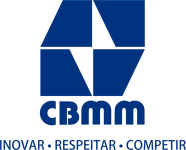Partners
Key to excellent research and results are great partnerships. Catalysis for a Sustainable Environment would like to thank for the excellent industry partnerships.
DR. J. G. COHN MEMORIAL FELLOWSHIP





Columbia-Susteon Partnership
Direct Air Capture of CO2 and catalytic conversion to methane or renewable natural gasThe feasibility of employing dual function materials (DFMs) for combined direct air capture (DAC) of CO2 followed by methanation is reported. Originally developed for point-source (i.e. power plant effluent) CO2 capture, the DFM is comprised of an alkaline adsorbent and a catalytic metal supported on the same Al2O3 carrier. The DFM allows the capture and conversion of CO2 to occur using a single material and reactor. Successful cyclic capture and methanation of 400 ppm CO2 in ambient air at isothermal conditions (320°C) has been demonstrated. Desorption of CO2 from the DFM at isothermal conditions was also explored; however, hydrogenation of the adsorbed CO2 more efficiently regenerates capture sites, enabling the DFM to maintain high CO2 capture capacity and produce methane through multiple cycles. Cyclic operation with the DFM is also possible in the presence of moisture, indicating that DFMs have further potential to be used for DAC scenarios.
Columbia and Susteon have partnered in a DOE sponsored program for the advancement of dual function materials for the direct air capture of CO2 from air and catalytically converting it into fuel and/or chemicals, also known as reactive capture. The program includes advanced materials testing by Columbia with Susteon providing a proposed process design and techno-economic assessment.
Technical Objectives
The overall technical objective of this project is to complete a laboratory testing program of the novel DFMs under ambient air conditions ultimately aimed at successful commercial deployment of DFMs in reactive direct air capture applications. Specifically, we propose to further develop and optimize existing dual function materials (DFMs) for DAC applications. The DFMs consist of porous solids containing a novel combination of an adsorbent and a catalyst involving selective chemisorption of CO2, followed by sorbent regeneration through reversible desorption or, preferably, catalytic conversion of adsorbed CO2 into renewable natural gas (CH4) using waste or renewable H2 under isothermal conditions. The technical goals of the project are:
- Establish the optimum process parameters (i.e. temperature and flow rates) of DFMs to directly capture (and desorb) CO2 from the air with the option to catalytically convert it to renewable natural gas.
- Establish rates for adsorption, desorption, and catalytic conversion of 400 ppm CO2 from air using optimized DFM and process parameters.
- Conduct cyclic aging studies of DFM for DAC of 400 ppm CO2 and its desorption with the option to catalytically convert it to renewable natural gas.
- Develop a process design for direct air capture and optional conversion to renewable fuel using DFM based on the results from 1, 2 and 3.
- Perform a preliminary techno-economic assessment (TEA) for DAC using DFM materials to assess the commercial potential of this technology for further development and larger scale testing in Phase II.
Progress to Date
Current lab-scale testing conducted under this program has shown encouraging results in identifying, synthesizing, and characterizing tailored DFMs. Work is now focused on optimizing the DAC CO2 adsorption process design, including placement of the nanoparticles on high surface area support, catalyst support structure design such as a ceramic monolith, integrated rapid cycle temperature swing cycle design, flow path architecture, and DFM bed construction. The process parameters (temperature, flow rate, O2, steam, impurities, pressure drop, and sorbent life) on the catalytic adsorption performance are being carefully evaluated.
Susteon has set up a framework for an initial techno-economic assessment and determined the maximum allowable pressure drop and heat input to economically sell the produced RNG. These constraints are fed back to the team at Columbia to guide the research program, ensuring a faster path to commercialization. In parallel with the laboratory work at Columbia, Susteon is developing equipment design, exploring potential vendors for critical equipment, and engaging potential early adopters.
Summary
The DFM-DAC approach enables high thermal efficiency for the carbon dioxide capture followed by in-situ conversion to renewable fuel or methane as chemical feedstock. The combination of effective adsorption with fast temperature swing provides the benefits of lower cost materials and design, lower overall energy input, and higher efficiency, without the need for CO2 purification, storage, and transportation.